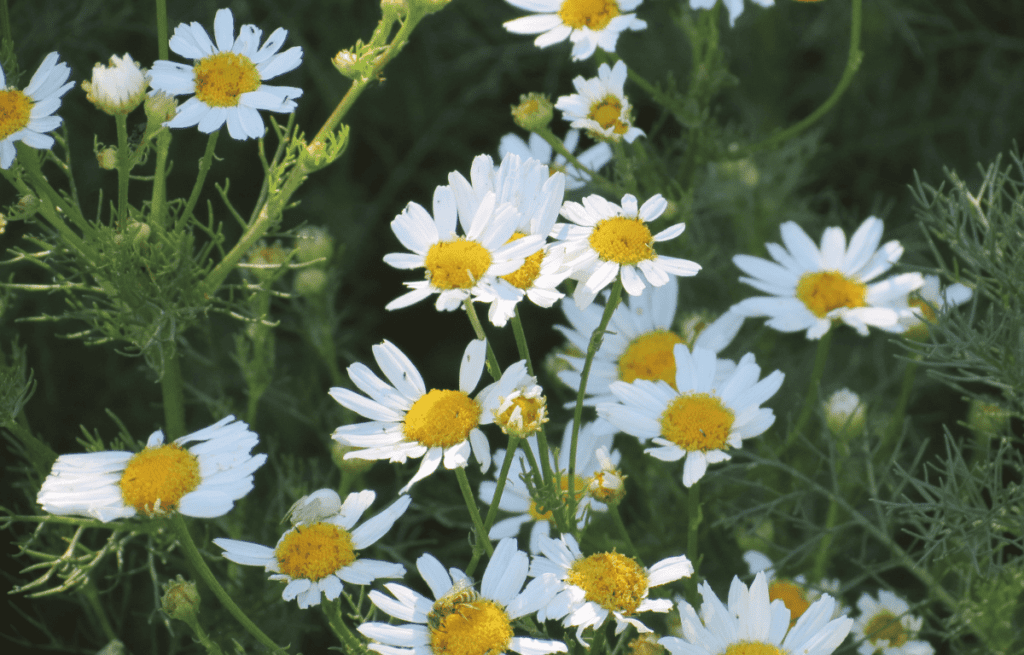Anti-Inflammatory Herbs Explained
[1, 3, 7, 8]
Anti-inflammatory is an herbal action term used to describe the medicinal effect a plant has on our bodies. Herbs with anti-inflammatory properties can directly reduce the inflammatory response or soothe the inflammation [7]. They can be administered with topical treatments or they can be taken internally with teas, pills, tinctures, etc .

What is inflammation?
Inflammation is the immune system’s response to an irritant, like a injury, foreign object, or a microbe [8]. When tissues are damaged, the body initiates a complex process to protect and repair the affected area. Inflammation occurs when the cells release substances called inflammatory mediators like histamine [8]. These substances cause cells in the affected tissues to dilate allowing blood, fluid, and immune system cells to reach the irritant for repair. They also also irritate nerves and cause pain signals to be sent to the brain to alert you of the injury.
In chronic inflammatory diseases like rheumatoid arthritis, inflammatory bowl disease, and psoriasis, the immune system attacks the body’s own cells. [8].
Common symptoms of inflammation include redness, warmth, swelling, pain, and loss of function (ex. breathing, smelling, movement) [8]. Severe inflammation may cause fever and general feelings of being ill.
Characteristics
[7, 8]
Definition: Herbs with anti-inflammatory properties soothe inflammations or directly reduce the inflammatory response [7].
Indications for use: Any condition ending in -itis (arthritis, gastritis, colitis, etc.) peptic ulcers, hiatus hernia, dyspepsia, injury, cuts, bruises, asthma, psoriasis
Join Our Newsletter
Sign up for our monthly newsletter to get easy gardening tips, seasonal to-dos, and herbal recipes delivered right to your inbox.
Thank you!
Check your email to confirm your subscription.
5 Common Anti-Inflammatory Herbs
1. Meadowsweet
Filipendula ulmaria
[1, 6, 7]
- Energetics: Slightly cooling, drying
- Parts Used: Leaves and flowers
- Preparations: Infusion, tincture, infused honey
- Actions: Astringent, anti-inflammatory, antiemetic, analgesic, antibacterial, diuretic
Meadowsweet is native to Europe and Asia and is part of the rose family (Rosaceae). It contains the constituent salicin used in the synthesis of Aspirin. Meadowsweet is often used for pain relief in arthritic conditions and head/neck pain caused by inflammation. It is also helps reduce gastric inflammation [7].
Make a meadowsweet infusion using 1 -2 tsp. dried leaves and flowers with 8 oz. boiling water. Let steep for at least 10 minutes, strain and serve. The infusion may be taken up to 3 times per day.

2. Nettle
Urtica dioica
[4, 5, 7]
- Energetics: Cooling, nourishing, drying (diuretic)
- Parts Used: Young leaves (before flowers appear), roots, seeds
- Preparations: Food (cooked or steamed leaves – beware of the sting!), infusion, tincture
- Actions: Alterative, antirheumatic, anti-inflammatory, galactagogue, astringent, diuretic
Nettle is native to the northern hemisphere and is known for the stinging hairs on its leaves and stems. It also goes by stinging nettles and is a member of the Urticaceae family. Nettles are rich in protein, vitamins, and minerals. We can use nettles to treat skin conditions, vitamin & mineral deficiencies, seasonal allergies, lung issues, prostate issues, insulin resistance, and poor elimination.
Taken tonically, nettles can help diminish the effects of seasonal allergies by reducing the body’s inflammatory response [4]. Drink a nettles infusion every day for about a month (ore more) before allergy season begins [4].
Make a nettle infusion using 1 tsp. to 1 tbs. dried leaves and 8 oz. boiling water. Let steep for at least 10 minutes, strain and serve. The infusion may be taken up to 3 times per day. A long infusion (steep approx 2 hours) will allow more of the nutrients to be extracted.

3. Yarrow
Achillea millefolium
[3, 5, 6]
- Energetics: Cooling and drying
- Parts Used: Leaves, flowers, roots
- Preparations: Infusion, decoction, tincture, oil, poultice, salve
- Actions: Styptic, anti-inflammatory, decongestant, astringent, alterative, antimicrobial, vulnerary, diaphoretic, circulatory stimulant, hypotensive, emmenagogue, antispasmodic, bitter
Achillea millefolium is native to Europe, Asia, and North America, and it is part of the daisy family (Asteraceae). Yarrow’s anticeptic (inhibits microbial growth) and styptic (reduces bleeding) actions make it an excellent addition to first-aid kits. The roots are especially beneficial for pain and inflammation.
May not be safe to take during pregnancy.
Make a yarrow decoction using 1-2 tsp. dried root and 8 oz. boiling water. Let simmer for at least 20 minutes, strain and serve. The decoction may be taken up to 3 times per day.

4. Chamomile
Matricaria recutita
[1, 4, 6]
- Energetics: Slightly cooling, slightly drying
- Parts Used: Flowers
- Preparations: Infusion, tincture, infused oil, compress, inhalation
- Actions: Antispasmodic, anti-inflammatory, antimicrobial, carminative, diaphoretic, emmenagogue, bitter, nervine
Chamomile is part of the daisy family (Asteraceae), and is native to Europe. It is a highly revered and versatile plant. It can be used to promote relaxation, ease an overstimulated mind, and relieve insomnia. Chamomile helps inhibit the body’s inflammatory response reducing inflammation and the development of inflammatory diseases [1].
May not be safe to take during pregnancy.
Make a chamomile infusion using 1-2 tsp. dried flowers with 8 oz. boiling water. Let steep for at least 10 minutes, strain and serve. The infusion may be taken up to 3 times per day.

5. Willow
Salix spp.
[5, 6, 7]
- Energetics: Cooling and slightly drying
- Parts Used: Bark, leaves, catkins
- Preparations: Infusion, decoction, powder, tincture
- Actions: Analgesic, anti-inflammatory, astringent, febrifuge
Willow is native to Europe and Asia and is part of the willow family (Salicaceae). There are several species in the Salix genus and many are used for medicine including S.alba, S. nigra, and S. purpurea. Aspirin, the pharmaceutical drug, is synthesized from a constituent in willow called salicin. However, willow contains many other constituents that aid in pain relief, as well, so it is not entirely accurate to call it a weaker form of aspirin. Willow can help reduce inflammation and many types of pain like headaches, back aches, and joint pain.
Make a willow decoction using 1/4 cup dried bark and twigs with 8 oz. boiling water. Let simmer for at least 20 minutes. Strain and serve.

Disclaimer: We consider many anti-inflammatory herbs to be generally safe, although there are circumstances when you should not take a particular herb. I am providing a brief and general overview of common anti-inflammatory herbs for educational purposes only.
Join Our Newsletter
Sign up for our monthly newsletter to get easy gardening tips, seasonal to-dos, and herbal recipes delivered right to your inbox.
Thank you!
Check your email to confirm your subscription.
References
1. Bhaskaran N, Shukla S, Srivastava JK, Gupta S. Chamomile, an anti-inflammatory agent inhibits inducible nitric oxide synthase expression by blocking RelA/p65 activity. Int J Mol Med. 2010;26(6):935-940.
2. Blankespoor J. The Healing Garden. Mariner Books; 2022.
3. Chevallier A. Encyclopedia of Herbal Medicine. Third. Penguin Random House; 2016.
4. De La Foret R. Alchemy of Herbs. Hay House Inc.; 2017.
5. De La Foret R, Han E. Wild Remedies. Hay House Inc.; 2020.
6. Easley T, Horne S. The Modern Herbal Dispensatory: A Medicicne-Making Guide. North Atlantic Books; 2016.
7. Hoffmann, FNIMH, AHG D. Medical Herbalism – The Science and Practice of Herbal Medicine. The Healing Arts Press; 2003.
8. IQWiG. What Is an Inflammation? Institute for Quality and Efficiency in Health Care (IQWiG); 2018. https://www.ncbi.nlm.nih.gov/books/NBK279298/












